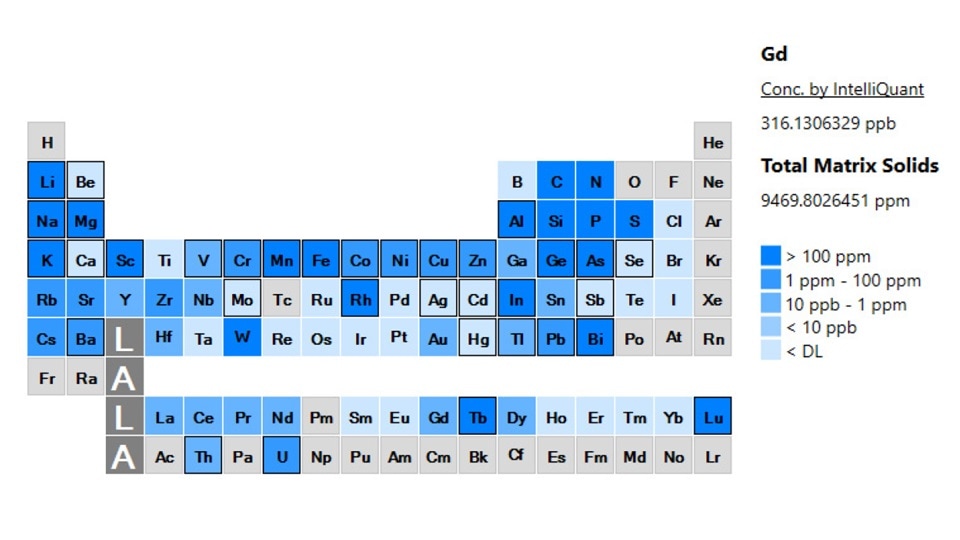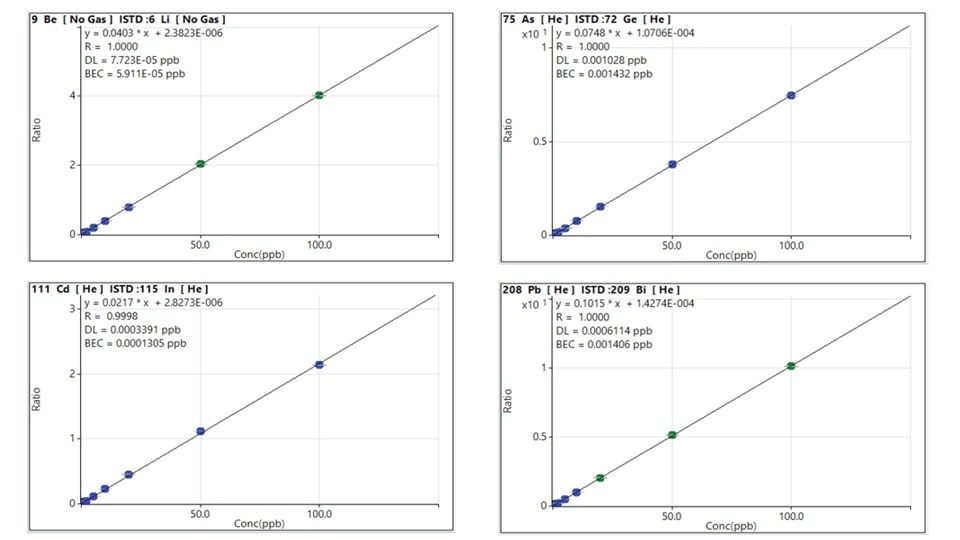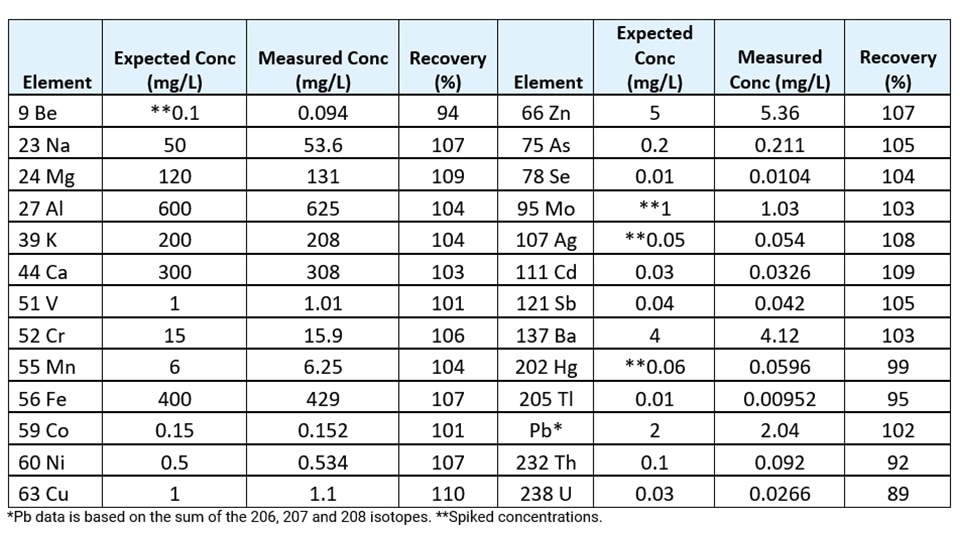When used in practice, the Advanced Dilution System (ADS 2) with Agilent ICP-MS instruments greatly enhances laboratory efficiency and reduces the workload of the analyst.
The combination of the instrument, autodilutor, AVS MS switching valve, and autosampler is especially useful for labs that run routine analyses of large numbers of samples. This integrated auto dilution system can even be used to analyze varied samples where the concentrations of the analytes can vary significantly.
In one evaluation1, an Agilent 7850 ICP-MS fitted with ADS 2 and the Agilent SPS 4 autosampler was used to measure 26 major, minor, and trace elements in various environmental samples using a single method.
The performance of the 7850 ICP-MS with ADS 2 was evaluated through the analysis of drinking water, wastewater, river sediment, soil, and synthetic seawater. Given the varied sample types and unknown total matrix solids (TMS) content, the 7850’s UHMI was used to reduce plasma loading and further enhance plasma robustness (low CeO+/Ce+ ratio).
Another study2 focused on the analysis of 144 digested soil samples and also demonstrated how ADS 2 and UHMI work together. Analysts can quickly assess the TMS of their samples by running a two-second IntelliQuant quick scan, as shown in Figure 1. The TMS helps analysts select which UHMI setting to use. IntelliQuant also identifies unexpected elements, such as rare earth elements, providing valuable information for the method.

ADS 2 automatically prepares calibration standards
Another study3 assessed the efficiency of ADS 2 for the automatic preparation of standard curves for the quantitative analysis of 31 elements in wastewaters using the Agilent 7900 ICP-MS. All elements were auto-calibrated from a stock standard using dilution factors of 200x, 100x, 40x, 20x, 10x, 4x, and 2x in less than 20 minutes.
The representative curves shown in Figure 2 cover low to high-mass elements, Be, As, Cd, and Pb. Excellent linearity was obtained for all analytes across the calibration range, as shown by calibration coefficients of R ≥ 0.9995.

Prescriptive dilution of a high matrix sample
A demonstration of the prescriptive dilution function of ADS 2 used the autodilution system to perform a 25x dilution of a River Sediment B CRM before analysis. Results for the certified elements are shown in Table 1. As no certified values are provided for Be, Mo, Ag, and Hg in the CRM, the elements were manually spiked at a relevant concentration.
All elements were measured within ±15% of the expected concentration, demonstrating the effectiveness of ADS 2 for the automatic dilution of a high matrix river sediment sample.

Accurate analysis of CRMs with reactive dilution
Reactive dilution of samples alleviates the need for post-analysis rework and repeat sample batch measurements, saving time and improving productivity.
To showcase the reactive dilution performance of ADS 2, the 7850 ICP-MS with ADS 2 analyzed drinking water, wastewater, river sediment, and soil CRMs three times each. The concentration of some elements (Na, Ca, Mo, and Ba in drinking water; Al, Ca, Cr, Fe, and Ba in river sediment; and Al, K, Mn, Fe, Cu, Zn, As, Ba, and Pb in soil) was initially measured above the calibration range.
Following reactive dilution by ADS 2 (Table 2), recoveries of 100 ± 5% for the elements in these matrices were achieved, demonstrating the accuracy of the autodilution.

